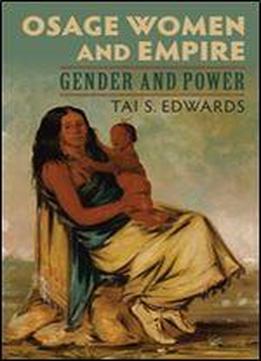
Osage Women And Empire : Gender And Power
by Tai Edwards /
2018 / English / PDF
8 MB Download
The Osage empire, as most histories claim, was built by Osage mens prowess at hunting and war. But, as Tai S. Edwards observes in Osage Women and Empire, Osage cosmology defined men and women as necessary pairs in their society, hunting and war, like everything else, involved both men and women. Only by studying the gender roles of both can we hope to understand the rise and fall of the Osage empire. In Osage Women and Empire, Edwards brings gender construction to the fore in the context of Osage history through the nineteenth century.
Edwardss examination of the Osage gender construction reveals that the rise of their empire did not result in an elevation of mens status and a corresponding reduction in womens. Consulting a wealth of sources, both Osage and otherwiseethnographies, government documents, missionary records, traveler narrativesEdwards considers how the first century and a half of colonization affected Osage gender construction. She shows how women and men built the Osage empire together. Once confronted with US settler colonialism, Osage men and women increasingly focused on hunting and trade to protect their culture, and their traditional social structuresincluding their system of gender complementarityendured. Gender in fact functioned to maintain societal order and served as a central site for experiencing, adapting to, and resisting the monumental change brought on by colonization.
Through the lens of gender, and by drawing on the insights of archaeology, ethnography, linguistics, and oral history, Osage Women and Empire presents a new, more nuanced picture of the critical role of men and women in the period when the Osage rose to power in the western Mississippi Valley and when that power later declined on their Kansas reservation.
"An important new work that refutes the long-standing false stereotype of the male domination and abuse of women in Plains warrior societies. Edwards restores Osage women to their rightful place in an egalitarian, non-hierarchical indigenous system in which they were respected and essential participants in every aspect of Osage life while providing new insights regarding Osage resistance to, and selective adaption of, white norms under US colonialism. Important reading for students of indigenous history, womens studies, and settler colonialism."Donna L. Akers, author of Living in the Land of Death: The Choctaw Nation, 18301860











